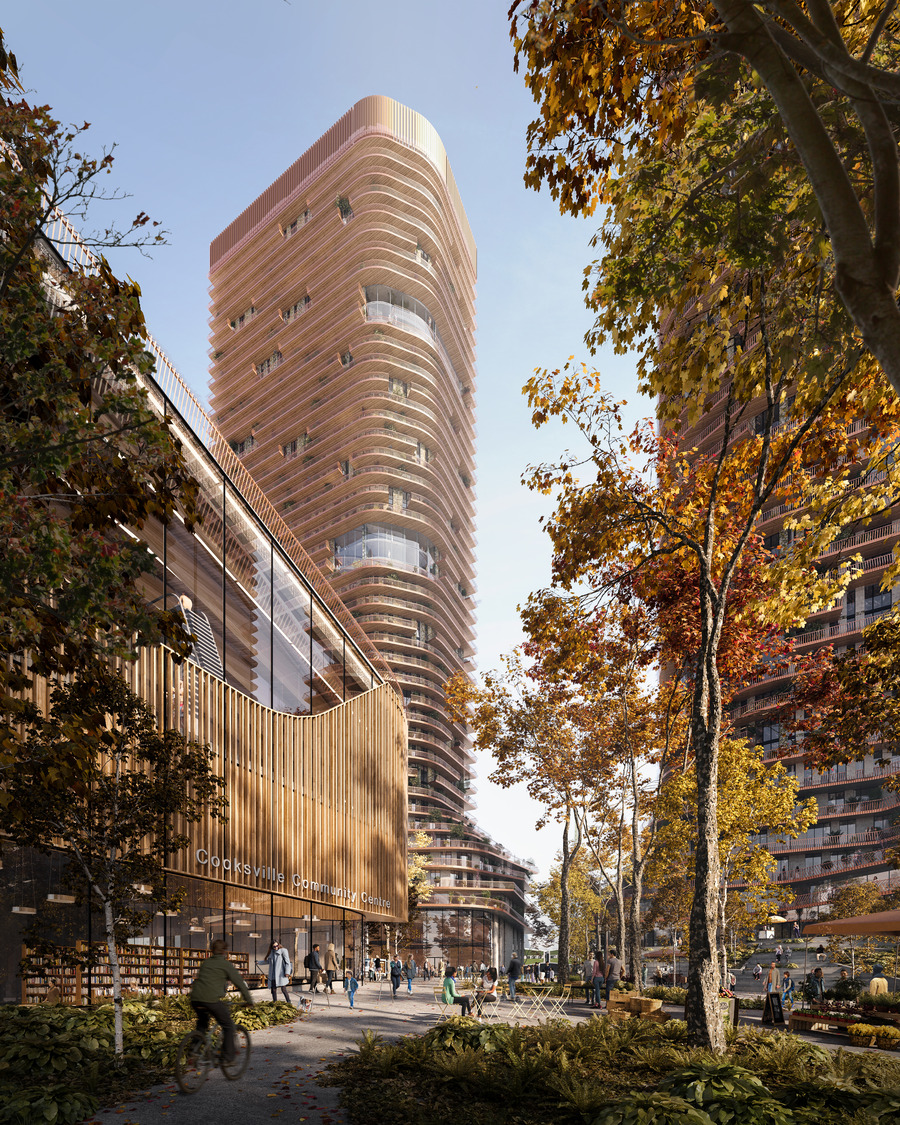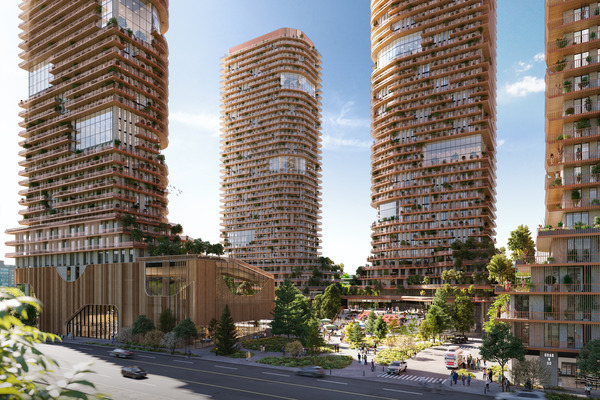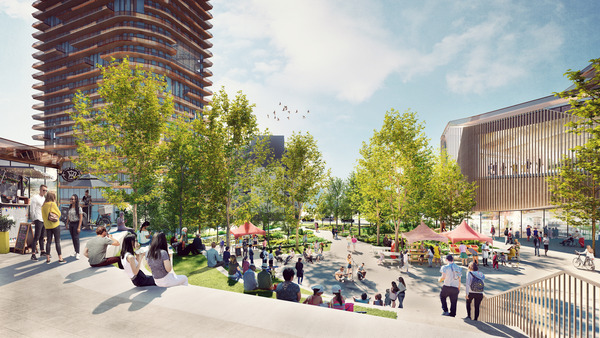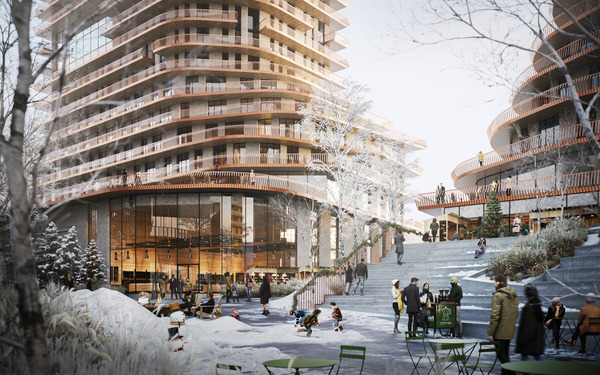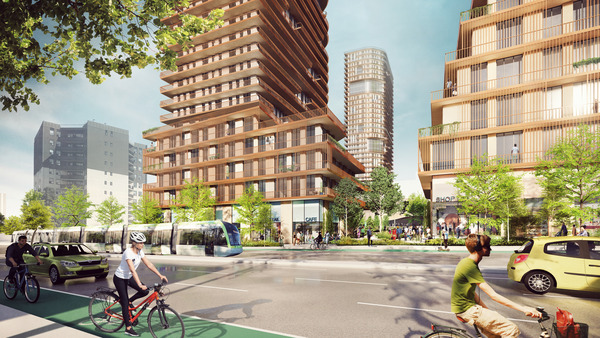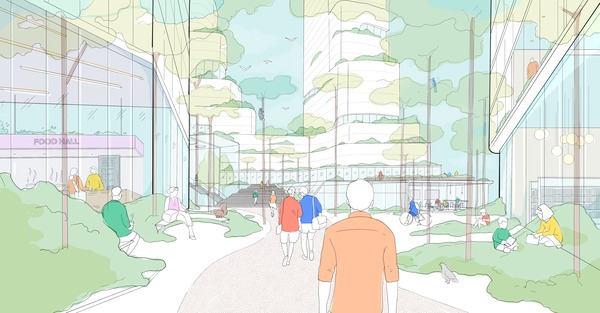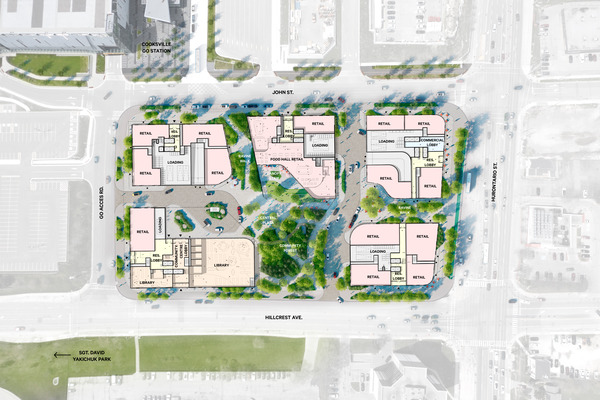Connecting Cooksville
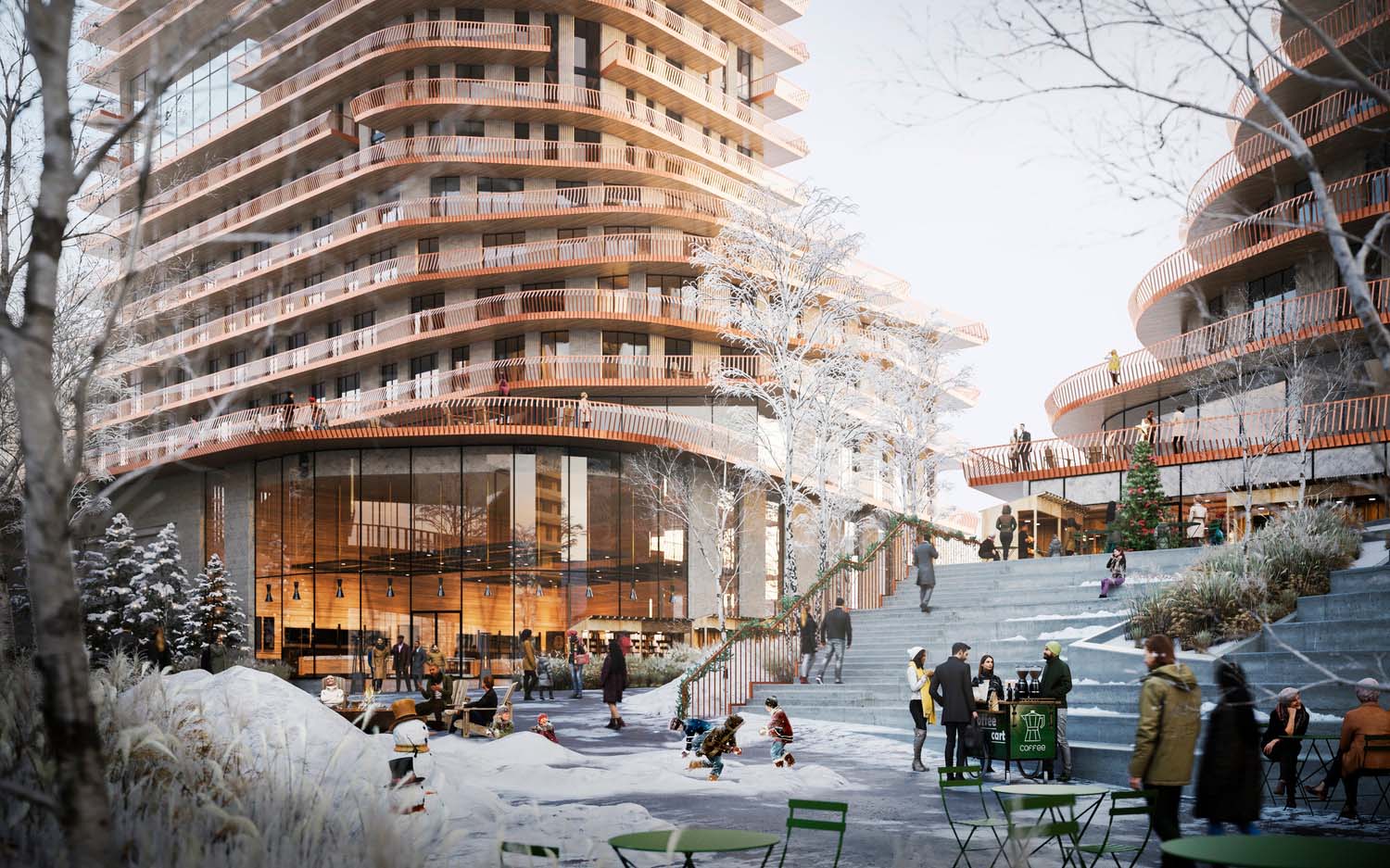
Connecting Cooksville
-
Location
Mississauga, Ontario
-
Client
TAS
-
Dates
2021-Present
- Expertise
- Urban Design, Urban Planning, Architecture, Sustainable Design
Treaty Lands
Head of the Lake Purchase Treaty 14 (1806)
Indigenous Rights Holders
Mississaugas of the Credit First Nation
Historical Occupation
Anishinaabe, Attiwonderonk, Haudenosaunee, Huron-Wendat
*Treaty, territory and historical occupation information has been included for educational purposes, and is meant to show respect for these caregivers. This information is not intended to be a finite view, nor is it intended to represent legal rights or definitive boundaries. To learn more about these matters, please contact the nations in question.
SvN's designs for Connecting Cooksville, is a vision for an integrated transit-oriented development in Mississauga, one of Canada’s fastest-growing cities. The site will transform an automobile-oriented site dominated by surface parking into an interconnected, transit-oriented, mixed-use development with interior streets and a regenerative landscape. The development will provide nearly 2,200 new units delivered as a mix of condominiums and purpose-built rental apartments. A partnership with Options for Homes aims to produce 250-300 homes through an attainable homeownership program. Amenities include a community centre with aquatic facilities, and a library, which would be delivered in partnership with the City of Mississauga. At nearly 1.7 million square feet, the development will have close to 100,000 square feet of commercial space, including a community gathering space covering almost half of the site.
An outdoor public plaza with a grand stair leading to a Central Plaza creates an open and accessible community space for events and activities that complement the full-service community centre amidst an urban forest. The community forest comprises several tree species as the basis to enhance biodiversity. Walking trails, outdoor kitchens and classrooms, cafe seating, spaces for recreation, exercise, and outdoor daycare play spaces provide additional ground-level programming. Over 90 percent of the ground-level building frontage will have retail or community uses.
SvN, in collaboration with WHY Architecture Workshop, have designed the urban forest to mitigate the heat island effect and improve stormwater management while responding to the City of Mississauga’s priority of increasing its tree canopy. The overall landscape strategy can be described as taking a forest and folding it onto the site, then integrating it within a street-and-block pattern made safe for vehicles, bikes, and pedestrian activities.
SvN’s design approach prioritizes climate resiliency by strategically designing the cluster of towers and a landscape that directly responds to the City of Mississauga’s Climate Action and Strategic Plans. It also offers many connections for pedestrians and vehicles, highlighting opportunities to prioritize the human scale and overall urban connectivity.
